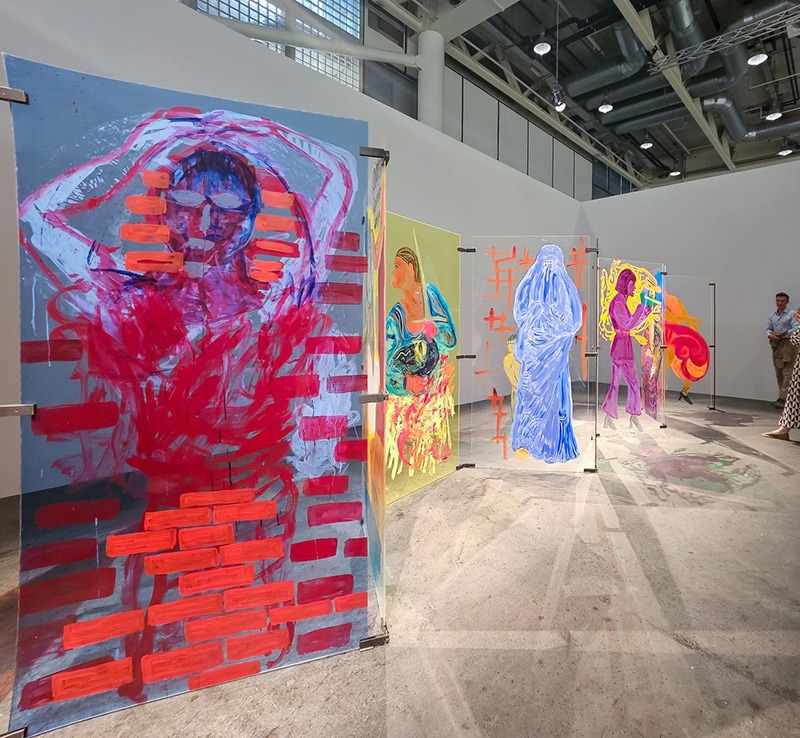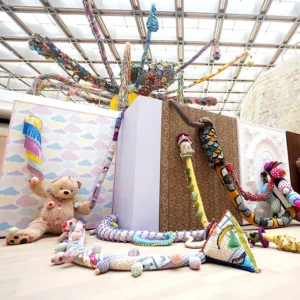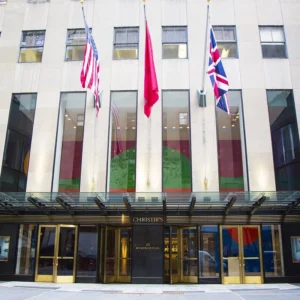Overview
Art Basel, one of the most highly anticipated art events of the year, is currently taking place in Basel at the famous Messe Basel until June 18. With a total of 284 leading galleries, including 21 first-time participants, the fair has made an extraordinary effort to ensure its success by attracting curators, fostering a more artistic experience rather than a purely transactional one. The fair showcases compelling works across various mediums, leaving the art world wondering whether Art Basel’s reputation, along with the quality of the works, creates an exceptional environment that remains unaffected by market fluctuations.
Art Basel also features special sectors: Unlimited, Parcours, Feature, Kabinett, and Statements. Unlimited showcases large-scale installations; Parcours presents site-specific works; Feature focuses on art-historical projects; Kabinett showcases concise curated installations; and Statements highlights emerging artists.
Curated by Samuel Leuenberger, the public art section aims to surprise and challenge viewers by placing sculptures, installations, performances, and films in unexpected locations. Previous installations have included Ai Weiwei’s “Iron Tree” and Pierre Huyghe’s “Exomind (Deep Water).” This year’s lineup features a flagpole by Martin Creed and a site-specific installation by Latifa Echakhch. Latifa Echakhch’s installation at Messeplatz will also include live concerts and performances, fostering public engagement.
Market Pulse

Art Basel dispelled concerns about a potential downturn in the art market following lackluster auctions in New York. Despite prevailing anxiety caused by geopolitical uncertainty and economic challenges such as high interest rates and inflation, serious collectors remained active, and some owners opted to sell their artworks at the fair rather than through auction houses.
On the first day, Art Basel showcased and sold high-value artworks, offering valuable insights into the performance of the art market. VIP attendees expressed great enthusiasm. Galleries located on the upper floor, which featured younger and relatively more affordable artists, experienced strong sales. Established dealers on the ground floor also reported positive responses from collectors.
Acquavella Gallery presented several million-dollar works, including Mark Rothko’s “Untitled (Yellow, Orange, Yellow, Light Orange).” Hauser & Wirth achieved successful sales, notably selling Louise Bourgeois’ “Spider IV” for $22.5 million. David Zwirner Gallery decided to disclose prices only for works sold on the primary market, prioritizing the protection of consignors’ privacy. Zwirner expressed satisfaction with this year’s sales, highlighting a significant improvement compared to the previous year.
Must-See Booths
Gallery Hyundai features Lee Ufan, whose minimalist style is highlighted in a collaboration with ceramicist Park Young-sook. The presentation showcases a series of terracotta works, emphasizing Ufan’s artistic approach and Park’s craftsmanship.
Sprüth Magers, known for its unconventional approach, exhibits a diverse selection of artists spanning different generations. The works by Anne Imhof, John Baldessari, and Pamela Rosenkranz challenge viewers and encourage deeper engagement.
The Jack Shainman Gallery showcases a range of contemporary artists, including Lynette Yiadom-Boakye, Carrie Mae Weems, and Hank Willis Thomas. Their artworks explore various themes, including identity and cultural heritage.
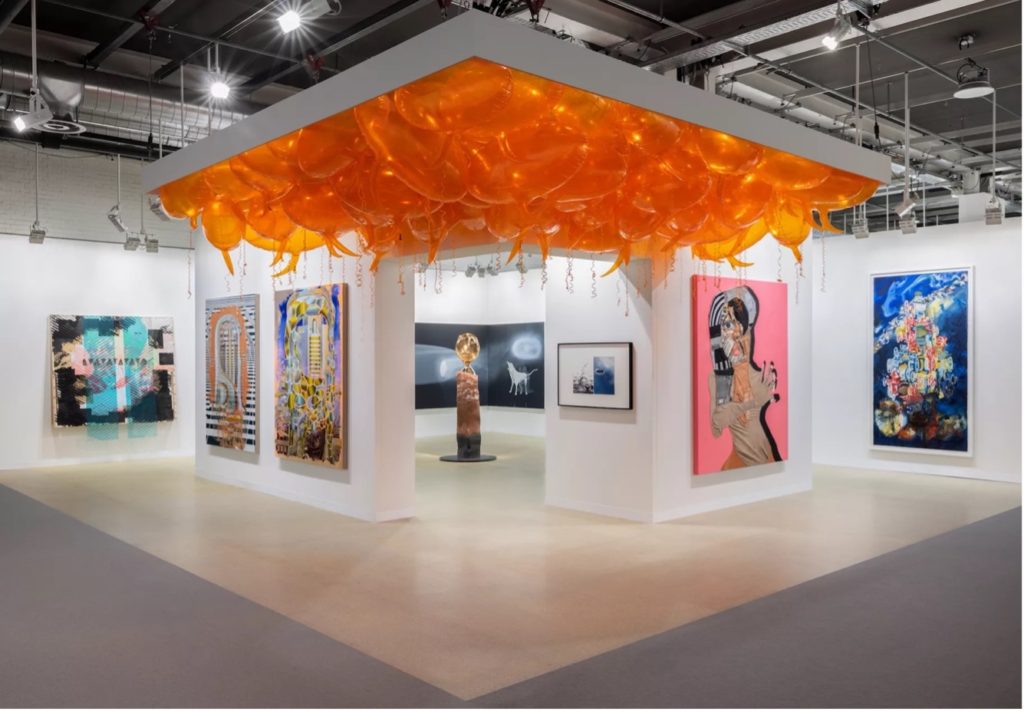
Pilar Corrias Gallery presents a diverse range of works by various artists, including installations, paintings, and sculptures. Notable highlights include Phillippe Parreno’s Mylar speech bubble balloons and a large-scale painting by Tala Madani.
Lia Rumma, a Milanese gallery focused on sculpture, presents works by artists such as Vanessa Beecroft and William Kentridge. The exhibition incorporates classic and Renaissance-inspired ceramic heads and metal cut-outs, adding a unique touch to the display.
The Stephen Friedman Gallery displays artworks by a wide range of artists, exploring themes of nature and portraiture. Notable pieces include Caroline Walker’s large-scale construction site painting and Yinka Shonibare’s fiberglass mannequin.
Sin Wai Kin presents the project “Portraits” in the Statements sector. The project features five nearly life-size filmed portraits of characters created by Sin. It delves into storytelling and interrogates binaries and fantasy narratives.
The Unlimited section showcases large-scale works, offering a diverse and captivating range of artworks. It provides a platform for artists to push boundaries and present their ambitious creations on a grand scale.
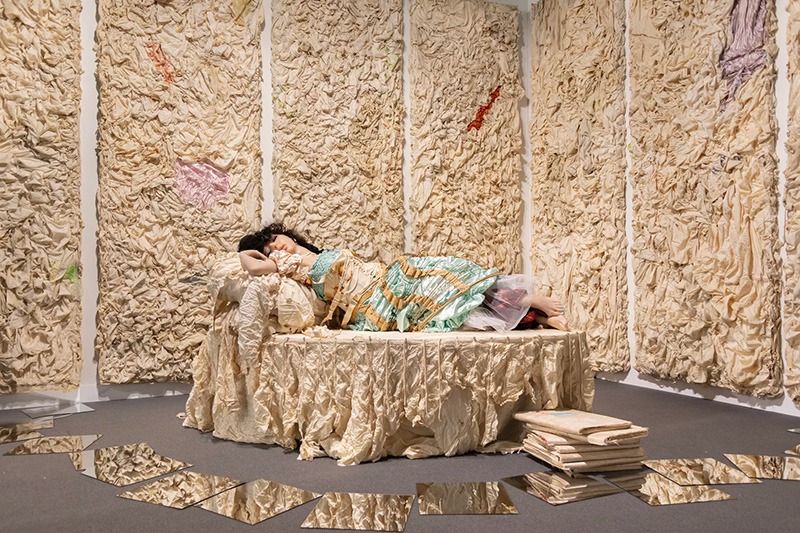
Franz West’s “100 Stühle” (100 Chairs) features a collection of white chairs arranged in the middle of the hall. The installation invites visitors to take a break and engage with the space, blurring the line between art and everyday life.
He Xiangyu’s “Inherited Wounds” displays miniature chairs collected from various sources, symbolizing the wounds and legacies passed down through generations. The installation explores the complexities of history and heritage, offering a thought-provoking commentary on societal issues.
Diamond Stingily showcases an ambitious installation titled “How Did He Die”. The installation incorporates black-and-white film footage from 1967, exploring themes of childhood, racial identity, and racial violence. It creates a sense of surveillance and memorialization, urging viewers to reflect on these pressing social issues.
Head Featured Image: Ursula Reuter Christiansen, Leporello (2013). Courtesy of Ocula

